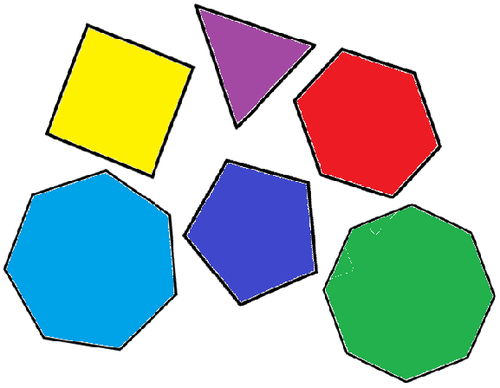Let me Count the Sides
 A regular polygon with side length 1 has area less than 123456789.
A regular polygon with side length 1 has area less than 123456789.
What is the maximum number of sides such polygon can have?
The answer is 39387.
This section requires Javascript.
You are seeing this because something didn't load right. We suggest you, (a) try
refreshing the page, (b) enabling javascript if it is disabled on your browser and,
finally, (c)
loading the
non-javascript version of this page
. We're sorry about the hassle.
3 solutions
Moderator note:
Thanks. For proving the area of a regular polygon with side length 1.
Generally, the area of a regular n -gon with side length p is 4 1 n p 2 cot ( n π ) .
I found a decent approximation by letting the radius of a similarly-sized circle be r , calling 2 π r = n and π r 2 = 1 2 3 4 5 6 7 8 9 . Then n = 2 π 1 2 3 4 5 6 7 8 9 / π ≈ 3 9 3 8 8 , so I just used the Challenge Master's formula to test n = 3 9 3 8 7 , n = 3 9 3 8 8 .
I forgot the 1/4 and just wrote n cot n π ...
A = N / [4 Tan(Pi / N)]
{Square unit area for unit side length of N-polygon.}
For N and A:
39387 for 123451377.754009 TRUE
39388 for 123457646.46933 FALSE
Answer: 39387
1 2 3 4 5 6 7 8 9 10 11 |
|
The area of an n -side regular polygon A n is the area of \n) isosceles triangle of equal sides r with base 1 , The angle at the center of the polygon is n 2 π and the two base angles are 2 1 ( π − n 2 π ) = 2 π − n π . Then, we have:
A n = 2 n ( 1 ) ( r ) sin ( 2 π − n π ) ⇒ A n = 2 n r cos n π
From cosine rule, we have:
1 2 = 2 r 2 − 2 r 2 cos n 2 π = 2 r 2 ( 1 − 2 cos 2 n π + 1 ) = 4 r 2 sin 2 n π
⇒ r 2 = 4 sin 2 n π 1 ⇒ r = 2 sin n π 1
⇒ A n = 2 n r cos n π = 4 n cot n π
For the largest A n < 1 2 3 4 5 6 7 8 9 , we have:
4 n cot n π ⇒ tan n π ⇒ n π n 2 ⇒ n n < 1 2 3 4 5 6 7 8 9 > 4 × 1 2 3 4 5 6 7 8 9 n [ For small x, tan x ≈ x ] > 4 × 1 2 3 4 5 6 7 8 9 n < 4 π × 1 2 3 4 5 6 7 8 9 < 4 π × 1 2 3 4 5 6 7 8 9 = 3 9 3 8 7 . 8 6 3 1 7 = 3 9 3 8 7
We can check that A 3 9 3 8 7 < 1 2 3 4 5 6 7 8 and A 3 9 3 8 8 > 1 2 3 4 5 6 7 8 , confirming the answer.